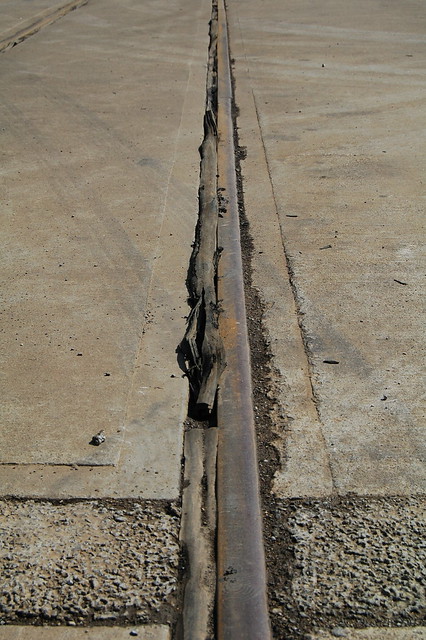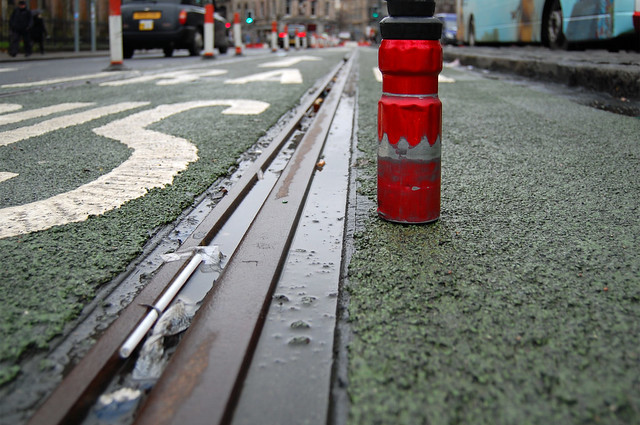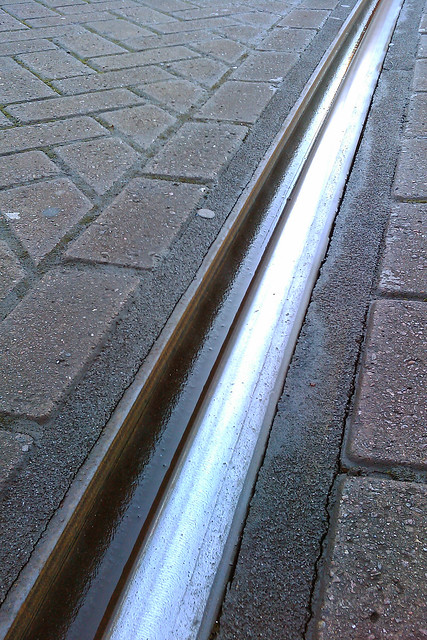It is not the flangeway gap that is the problem in many cases, it is the fact that you hit a small vertical edge, like that of a badly installed dropped kerb, at a shallow angle. There are sections of the Edinburgh street track where the detail finish has a strip about 30-40cm wide riddled with dips and ridges, making it far more hazardous than simply riding across a rail gap.
Sheffield Supertram inspect their street track regularly and mark any vertical edge greater than 3mm between railhead and street as a defect. This is linked to a historic crash where a motor car lost control on 'high' tram rails.
Some of the finishing detail of the tram rails in the road in Edinburgh has been much poorer than both the 3mm standard and the 6mm standards that widely apply to many surface features as the MAXIMUM for any ridge or step.
Filling the groove with a lump of rubber does not work, a detail that I've studied since 1990 when I saw the OMNI (Goodyear) units in Seattle falling apart and shedding lengths of the rubber tubes that were used to fill the flangeways.
The veloSTRAIL units do seem to have cracked it, but are probably a very expensive way to do a whole on-street system. They have been retrofitted to the tram system in Geneva BUT that system used a much simpler track construction method, which does not include a huge slabs of concrete used for Edinburgh, and the units and drainage required were simpler to retro-fit. VeloSTRAIL uses a removable block which fits into the roadway surface and has a soft pad underneath, which crushes and springs back up under the weight of a rail wheel. Network Rail are testing a crossing as prelude to approving it for use although one of the other 400 or so railway operators in the UK may choose to install the system before NR approves it for the National network.
Concluding though - if you do come off check the vertical profile of the road surface at that location - even an over zealous use of thermoplastic road markings will create a dangerous and slippery edge to kick your tyre sideways. Photograph the profile with a contrasting straightedge (stiff white card/folded stiff paper is good basic item ready at hand - ultimate for potholes etc is plaster cast or expanding foam under hardboard 'plate' with cling-film release membrane)




 posts
posts
